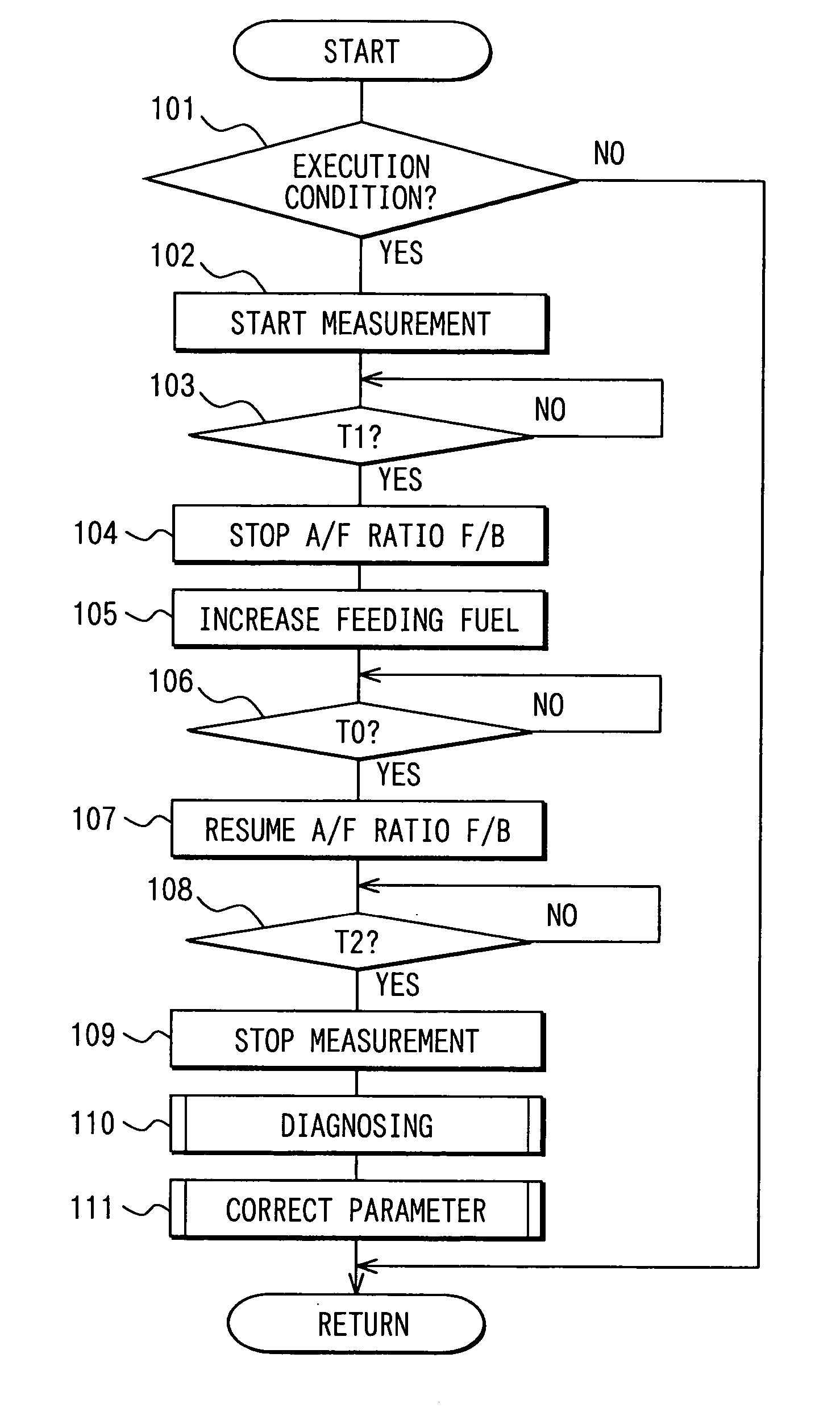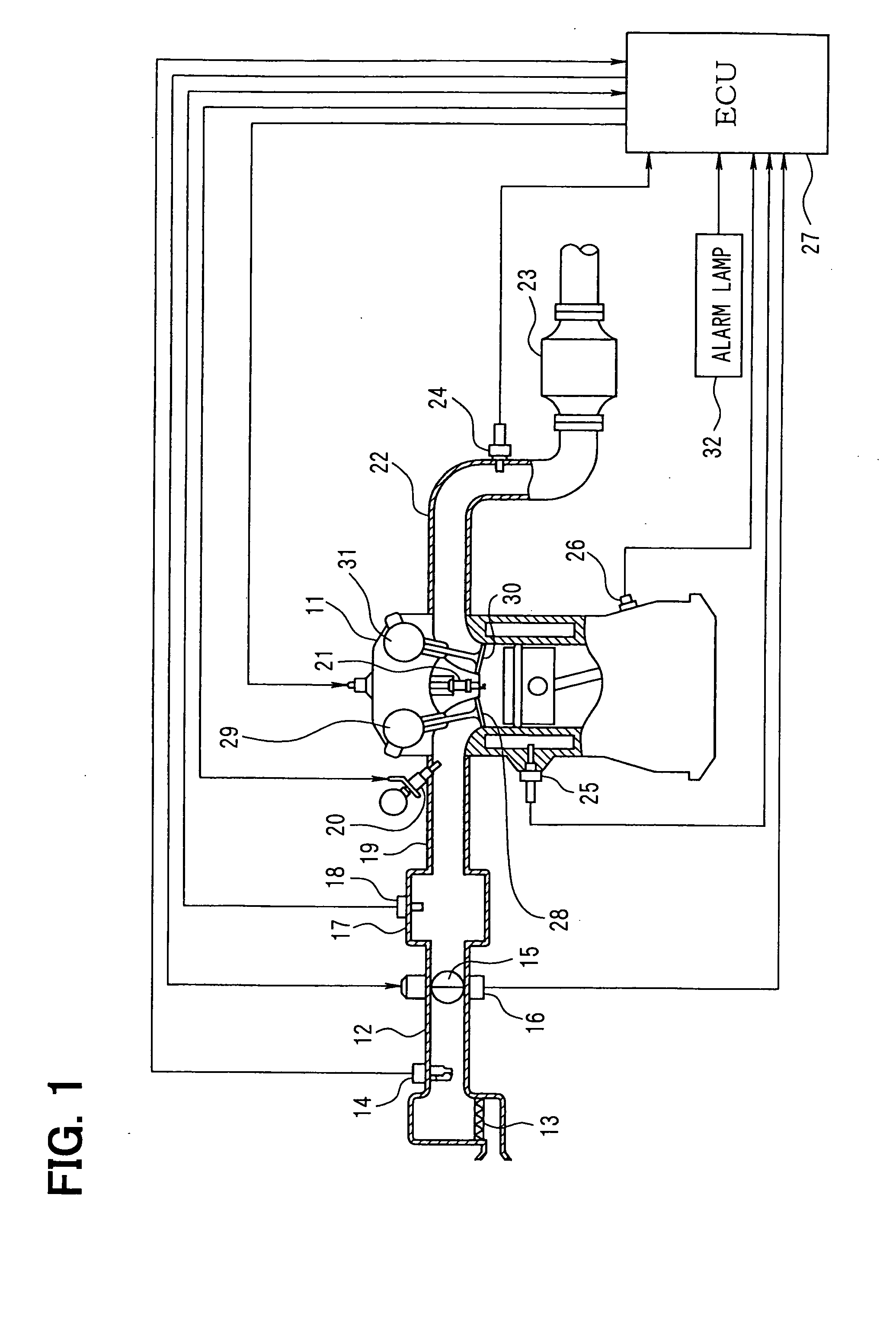Device for detecting response characteristics of sensor
a sensor and response technology, applied in the direction of electrical control, process and machine control, etc., can solve the problems of difficult to precisely detect the deterioration of the air-fuel ratio feedback controllability, the failure of the sensor, and the deterioration of the engine performance, so as to improve the precision for diagnosing the failure condition of the sensor and improve the precision for controlling the air-fuel ratio
- Summary
- Abstract
- Description
- Claims
- Application Information
AI Technical Summary
Benefits of technology
Problems solved by technology
Method used
Image
Examples
embodiment 1
[0029] An embodiment 1 in which the invention is applied to an intake port injection engine will now be described with reference to FIGS. 1 to 9. First, FIG. 1 schematically illustrates the constitution of an engine control system as a whole. An air cleaner 13 is provided at the most upstream portion of an intake pipe 12 of an engine 11 which is an internal combustion engine, and an air flow meter 14 is provided on the downstream of the air cleaner 13 for detecting the amount of the air taken in. On the downstream of the air flow meter 14, there are provided a throttle valve 15 of which the opening degree is adjusted by a motor 10 and a throttle-opening sensor 16 for detecting the throttle opening degree. Further, a surge tank 17 is provided on the downstream of the throttle valve 15, and an intake pipe pressure sensor 18 is provided in the surge tank 17 to detect the pressure in the intake pipe. The surge tank 17 is further provided with an intake manifold 19 for introducing the ai...
embodiment 2
[0083] In the above embodiment 1, the response characteristics of the air-fuel ratio sensor 24 are detected by shifting the air-fuel ratio stepwise toward the rich side (or the lean side) by increasing (or decreasing) the amount of feeding the fuel by step inputting during the steady operation of the engine 11. In the embodiment 2 of the invention, however, the response characteristics (dead time TA and the response time TB) of the air-fuel ratio sensor 24 are detected by utilizing a change in the amount of feeding the fuel when the target air-fuel ratio is changed over to the rich side or the lean side and the amount of feeding the fuel is varied (increased or decreased) during the steady operation of the engine 11.
[0084] In this embodiment 2, a routine for calculating the dead time of FIG. 10 is periodically executed while the engine is in operation to calculate the dead time in a manner as described below. When the routine starts, it is determined at step 211, first, if the dead...
embodiment 3
[0091] In the above embodiments 1, 2, the point where the gradient of change in the sensor output exceeds the threshold value after the amount of feeding the fuel has been changed is detected as a point of start of change. It is, however, also allowable to detect response times of a number of not less than n+1 to estimate an approximation (transfer function) of a curve of a change in the sensor output of the n-order delay, to estimate the point of start of change based on the curve of change in the sensor output and on the sensor output (steady value BA) in the steady state of before the amount of feeding the fuel is changed, thereby to calculate the dead time by using the point of start of change.
[0092] The method of calculating the dead time will now be described by way of the embodiment 3 of the invention illustrated in FIGS. 11 and 12. In this embodiment 3, a routine for calculating the dead time of FIG. 12 is executed to detect two response times (e.g., 30% response time NT1 a...
PUM
 Login to View More
Login to View More Abstract
Description
Claims
Application Information
 Login to View More
Login to View More - R&D
- Intellectual Property
- Life Sciences
- Materials
- Tech Scout
- Unparalleled Data Quality
- Higher Quality Content
- 60% Fewer Hallucinations
Browse by: Latest US Patents, China's latest patents, Technical Efficacy Thesaurus, Application Domain, Technology Topic, Popular Technical Reports.
© 2025 PatSnap. All rights reserved.Legal|Privacy policy|Modern Slavery Act Transparency Statement|Sitemap|About US| Contact US: help@patsnap.com



